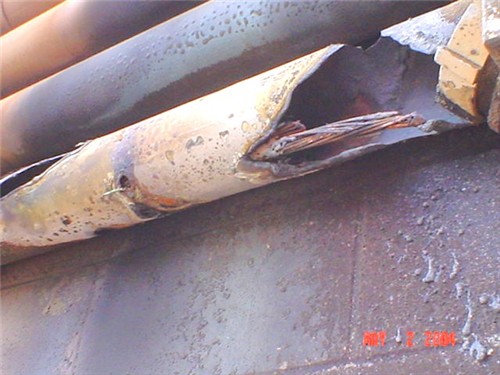thunder15j
Member
- Location
- Cali
We are designing a 1600 amp,480 volt 3 wire plus ground (no nuetral) underground direct buried circuit using 535.5 MCM DLO/RHW cable for a temporary feed at a mining quarry. There will be four conductors per phase.
We plan on installing in a trench-4 groups of 3 wires-AB&C phases with a little spacing between groups to avoid 310-15 (b)(2(a) derating.I'm not certain of how much spacing is required, but one might interpret spacing as not touching another conductor.
Article 250-122(f)(1) adresses running a full sized equipment grounding conductor in each conduit or cable. However in the case of direct buried cable, nothing is mentioned. I was wondering what the intent of the code is when requiring a full sized ground in each conduit. I assume it has something do with inductive reactance and/or unequal division of current as noted in FPN in 310-4.
I am uncertain of how to handle the equipment grounding conductors in this installation. I could run a total of 1 egc per phase giving a total of 4. This does seem excessive.
I could just run one equipment grounding conductor and ziz-zag it from one side of the trench to the other to be in close proximity to all runs at one time or antother. I was also thinking of running 2 egc's layed between group #1 and between #3. This would keep a egc in close proximity to alll hot/phase conductors at all times.
Please add comments on our proposed installation especially about the equipment grounding conductors. thnx
Notes: 535MCM DLO is rated at 445 amps @ 90C ;we're replacing existing parallel 2 x 535MCM per phase that is currently fed by a 1200 amp breaker. We feel that this is a safety issue and also the existing feed is buried too shallow and is in constant danger of being uncovered. The rating of 535MCM DLO in free air is 725 amps and that is where the previous installer probably goofed.
We plan on installing in a trench-4 groups of 3 wires-AB&C phases with a little spacing between groups to avoid 310-15 (b)(2(a) derating.I'm not certain of how much spacing is required, but one might interpret spacing as not touching another conductor.
Article 250-122(f)(1) adresses running a full sized equipment grounding conductor in each conduit or cable. However in the case of direct buried cable, nothing is mentioned. I was wondering what the intent of the code is when requiring a full sized ground in each conduit. I assume it has something do with inductive reactance and/or unequal division of current as noted in FPN in 310-4.
I am uncertain of how to handle the equipment grounding conductors in this installation. I could run a total of 1 egc per phase giving a total of 4. This does seem excessive.
I could just run one equipment grounding conductor and ziz-zag it from one side of the trench to the other to be in close proximity to all runs at one time or antother. I was also thinking of running 2 egc's layed between group #1 and between #3. This would keep a egc in close proximity to alll hot/phase conductors at all times.
Please add comments on our proposed installation especially about the equipment grounding conductors. thnx
Notes: 535MCM DLO is rated at 445 amps @ 90C ;we're replacing existing parallel 2 x 535MCM per phase that is currently fed by a 1200 amp breaker. We feel that this is a safety issue and also the existing feed is buried too shallow and is in constant danger of being uncovered. The rating of 535MCM DLO in free air is 725 amps and that is where the previous installer probably goofed.


